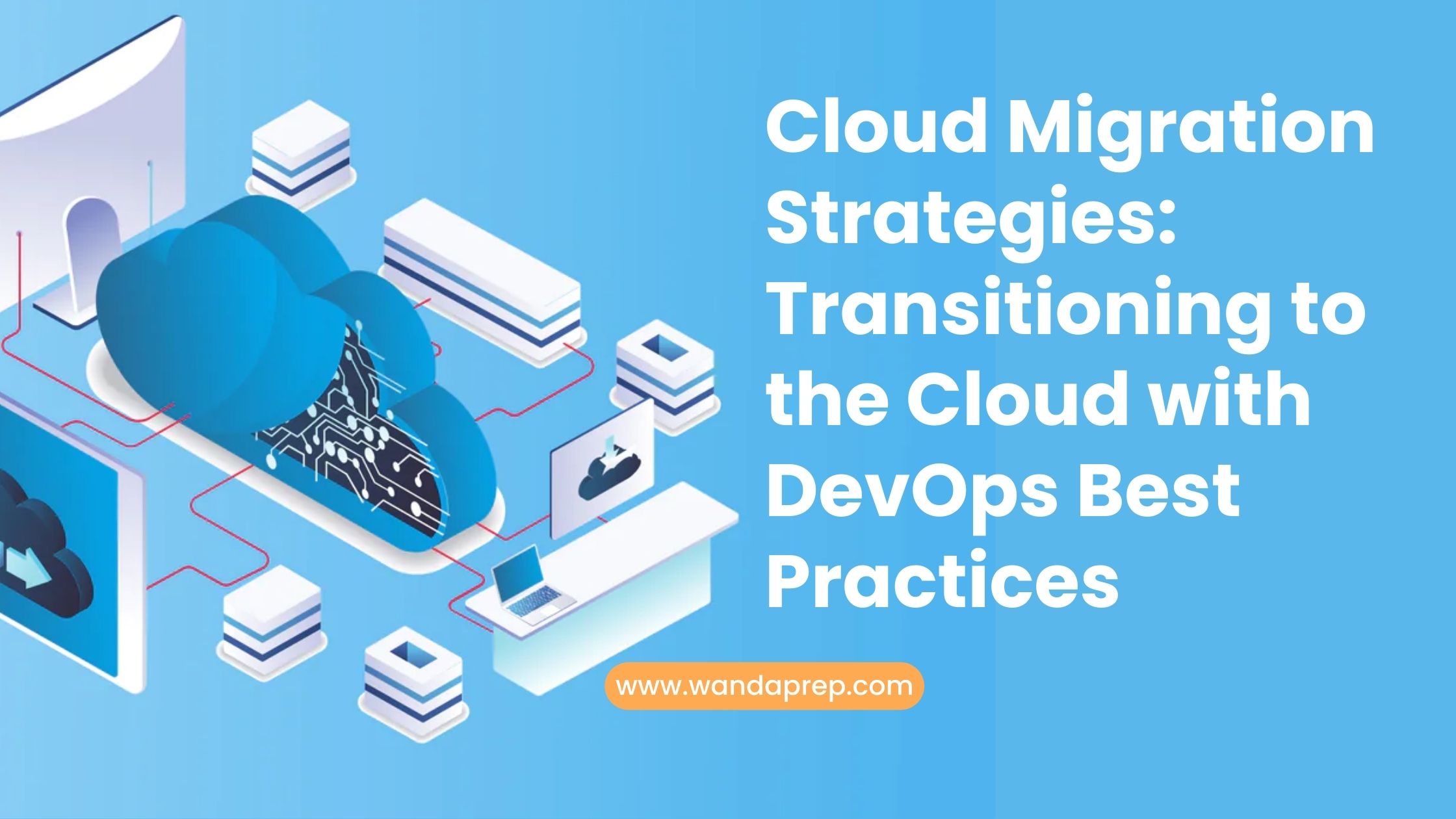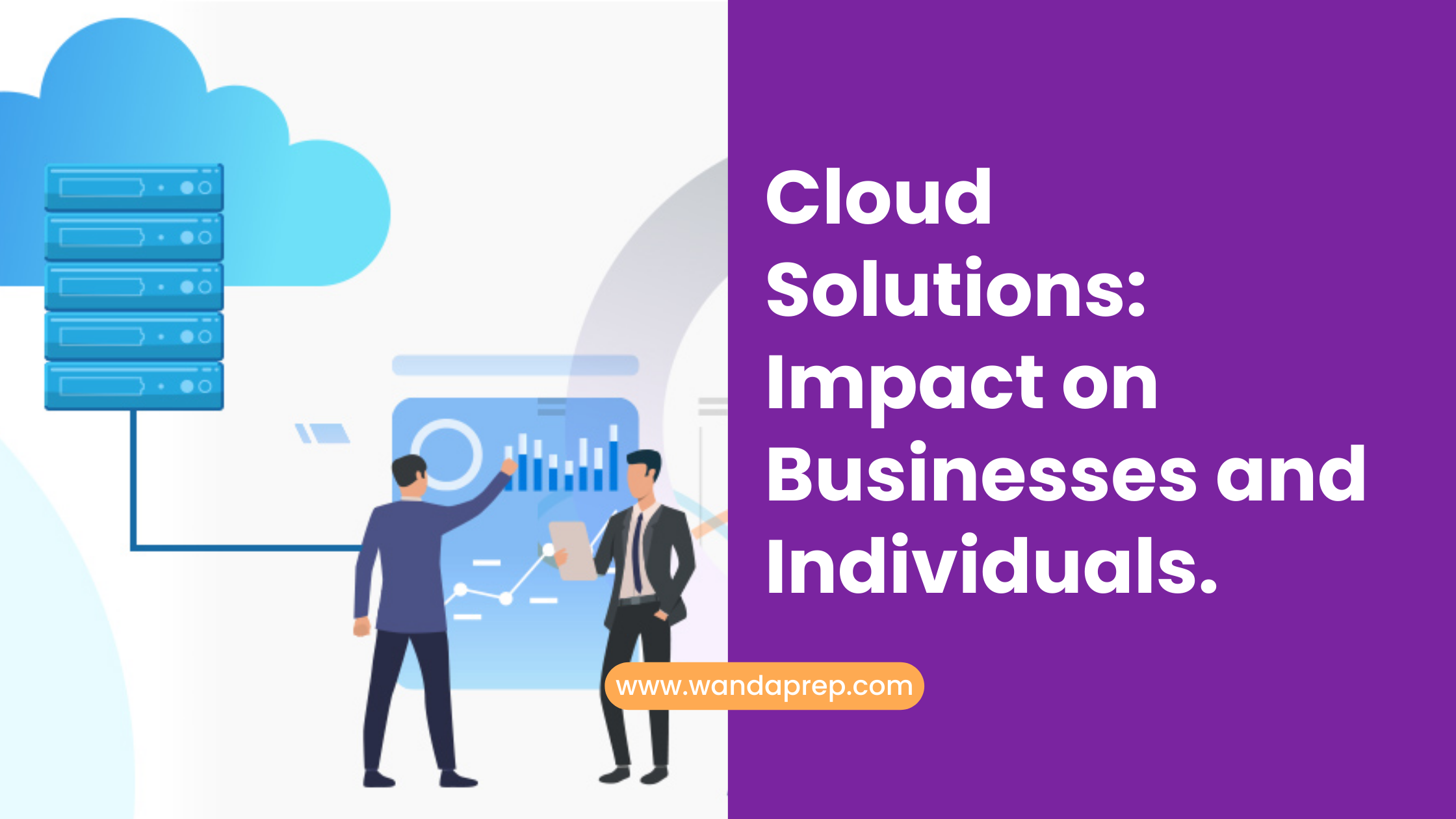Introduction
In today’s rapidly evolving digital landscape, businesses are increasingly turning to cloud technologies to drive innovation, enhance scalability, and optimize costs. Cloud migration, the process of moving applications, data, and workloads from on-premises infrastructure to the cloud, has become a critical step for organizations seeking to stay competitive.
In this blog post, we’ll delve into the world of cloud migration, exploring best practices, challenges, and the role of DevOps in ensuring a successful transition. Whether you’re a seasoned IT professional or just dipping your toes into the cloud waters, this guide will provide valuable insights to help you navigate the journey.

Understanding Cloud Migration Trends
In recent years, the widespread adoption of cloud services has revolutionized the way businesses approach their IT infrastructure. Organizations across various industries have embraced cloud computing for its scalability, flexibility, and cost-effectiveness. The shift from traditional on-premises systems to cloud-based solutions has enabled businesses to streamline their operations, enhance collaboration, and improve overall efficiency. Furthermore, the cloud has empowered companies to harness the power of big data and analytics, enabling them to make informed decisions and gain valuable insights into their operations. This shift has also facilitated remote work, allowing employees to access data and applications from anywhere, at any time, leading to increased productivity and flexibility.
As cloud services continue to gain momentum, there has been a notable shift from monolithic applications to microservices-based architectures. This approach allows for the development and deployment of applications as a suite of independently deployable, small, and modular services. The microservices architecture offers numerous advantages, including improved scalability, better fault isolation, and accelerated development cycles. By breaking down applications into smaller components, organizations can achieve greater agility and faster innovation, enabling them to adapt to changing market demands more effectively. This evolution in architectural design has been a crucial factor in the transformation of businesses into more agile, responsive entities, capable of meeting the dynamic needs of the modern digital landscape. Moreover, the significant spending on public cloud services in recent years underscores the growing reliance on cloud technology as a cornerstone of modern business operations. With businesses investing heavily in public cloud infrastructure, the trend towards cloud adoption is set to continue its upward trajectory, reshaping the IT landscape and driving further innovation across industries.
Challenges in Cloud Migration
Cloud migration is a complex process that requires careful planning
While cloud migration promises significant benefits, simply transitioning workloads and applications to the cloud without a clear strategy is risky and can lead to unintended consequences like overspending. Cloud migration is no longer a simple transition – it involves assessing business needs and objectives, evaluating various cloud deployment models, and understanding how applications interact with one another. A lack of clarity around organizational goals and requirements can result in unnecessary expenses as cloud services are adopted in an ad hoc manner without focus.
Understanding objectives is key to a successful, cost-effective migration
It is crucial for organizations to have well-defined objectives for their cloud migration initiatives from the start. This includes identifying key performance indicators to measure success. Without understanding the specific business problems a cloud migration aims to solve, there is a risk of overspending on capabilities that do not provide value. A strategic, iterative approach involving workload prioritization and phased migration helps ensure resources are allocated efficiently based on priority rather than convenience alone.
Balancing On-Premises and Cloud
While the adoption of cloud services has seen remarkable growth, it’s important to acknowledge that on-premises infrastructure still holds significant value for many organizations. On-premises infrastructure provides a level of control and security that is essential for certain industries and regulatory requirements. Organizations that have specific privacy and regulatory needs often find that on-premises infrastructure offers the necessary control over security and data management. The coexistence of on-premises and public cloud environments allows businesses to leverage the benefits of both, ensuring a balanced approach that meets their unique operational and compliance needs. This hybrid approach enables organizations to maintain critical workloads on-premises while leveraging the scalability and flexibility of the public cloud for other operations.
Security and control concerns are paramount when considering the migration to cloud services. While the cloud offers numerous advantages, including scalability and cost-effectiveness, organizations must carefully assess the security implications of moving their data and applications to the cloud. Understanding the specific security and compliance requirements of the business is crucial to ensure that the migration to the cloud does not compromise data integrity and security. Additionally, the risk of overspending due to a lack of clarity in business needs is a significant concern. Without a clear understanding of objectives, organizations may invest in unnecessary cloud capabilities, leading to inflated expenses. Therefore, it is imperative for businesses to thoroughly evaluate their requirements and align cloud services with their specific operational and strategic goals to avoid unnecessary expenses and ensure a cost-effective migration.

Why Companies Choose Cloud Migration
Cloud technologies offer a multitude of benefits, including improved user experiences and the ability to introduce new services. The flexibility and scalability of cloud services enable organizations to meet fluctuating demands instantly, without the need for complex and expensive updates to their IT infrastructure. This enhanced freedom and flexibility can significantly improve the overall efficiency of an organization. Additionally, cloud-based services provide quick data recovery for various emergency scenarios, from natural disasters to power outages, ensuring business continuity and data integrity. Use cases such as cloud-based gaming platforms and AI/ML efforts exemplify the changing nature of demand and innovation in the cloud space. Cloud gaming, for instance, is revolutionizing the gaming industry by breaking down barriers of cost and platform, offering gamers access to high-quality titles without the need for expensive hardware. Furthermore, cloud technologies enable organizations to achieve faster time to market and incorporate AI and machine learning use cases into their strategies, fostering innovation and accelerating the development of new services and capabilities.
The evolving landscape of cloud computing has led to a rapid acceleration of innovation, particularly in areas such as DevOps, CI/CD pipelines, and cloud-native advancements like microservices, serverless, and containerization. These technologies have not only facilitated rapid acceleration and innovation but also require a self-sustaining cloud infrastructure to support the hundreds of services. Cloud computing also empowers companies to gain powerful insights and optimize business processes through big data analytics, further demonstrating the transformative impact of cloud technologies on various industries. The demand for cloud services continues to grow, with worldwide public cloud end-user spending forecasted to reach nearly $600 billion in 2023, reflecting the exciting and promising nature of the cloud computing landscape. As organizations continue to leverage cloud technologies to drive innovation and meet evolving business needs, the cloud space is set to remain dynamic and influential, shaping decision-making and driving transformative change across industries.
Best Practices for Cloud Migration
Developing a well-curated transition strategy based on current trends involves several key steps. Firstly, it is essential to define clear goals and objectives for the cloud migration. Understanding the organization’s specific business needs and requirements early in the process is crucial to leveraging the cloud effectively. This includes identifying areas where significant cost savings can be achieved, optimizing the use of cloud resources, and avoiding unnecessary expenses on licensing, maintenance, and operational costs. Additionally, a well-designed migration strategy can help reduce downtime by ensuring that the migration is executed efficiently and effectively, minimizing the impact on business operations. It also helps identify common cloud migration challenges and potential risks, thereby minimizing risks and ensuring that the migration is executed smoothly.
Furthermore, it is important to manage multicloud costs and complexity by defining a strategy for cloud workload placement. This involves choosing a primary, preferred provider and adding additional providers in an orderly fashion driven by specific business needs. Developing a cloud workload placement framework that matches needs with the right-fit cloud provider is essential to ensure a cost-effective and efficient transition. Additionally, reviewing and refining the cloud strategy and roadmap should be an ongoing and iterative process, based on changing business needs and market conditions. This iterative approach allows for continuous improvement and adaptation to evolving requirements, ensuring that the cloud strategy remains aligned with the organization’s goals and objectives.
A well-curated transition strategy based on current trends involves early identification of requirements, cost-effective cloud workload placement, and an iterative approach to refining the cloud strategy. By understanding the organization’s specific business needs, managing multicloud costs and complexity, and continuously reviewing and refining the cloud strategy, organizations can effectively leverage cloud technologies to drive innovation and meet evolving business needs.
Conclusion
The importance of cloud migration cannot be overstated, as it offers organizations the opportunity to harness the power of cloud technologies to drive innovation, enhance operational efficiency, and meet evolving business needs. However, it is crucial for businesses to stay informed about current trends and make informed decisions when embarking on cloud migration initiatives. By understanding the latest statistics, challenges, and successes related to cloud migration, organizations can develop a well-curated transition strategy that aligns with their specific business goals and requirements. This involves careful planning, early identification of requirements, and a strategic approach to optimizing the use of cloud resources. Staying informed about trends and making informed decisions is essential to ensure a successful and cost-effective transition to the cloud, enabling organizations to leverage the full potential of cloud technologies to drive innovation and achieve their strategic objectives.
The evolving landscape of cloud computing, as evidenced by the increasing adoption of cloud services and the rapid acceleration of innovation, underscores the transformative impact of cloud technologies on various industries. By staying abreast of current trends and leveraging the latest insights into key drivers and market forecasts, organizations can make informed decisions that align with their cloud migration goals and contribute to their long-term success. It is imperative for businesses to continuously evaluate and refine their cloud strategy based on changing business needs and market conditions, ensuring that their cloud migration initiatives remain aligned with their organizational objectives and positioned to take advantage of new capabilities and opportunities.







